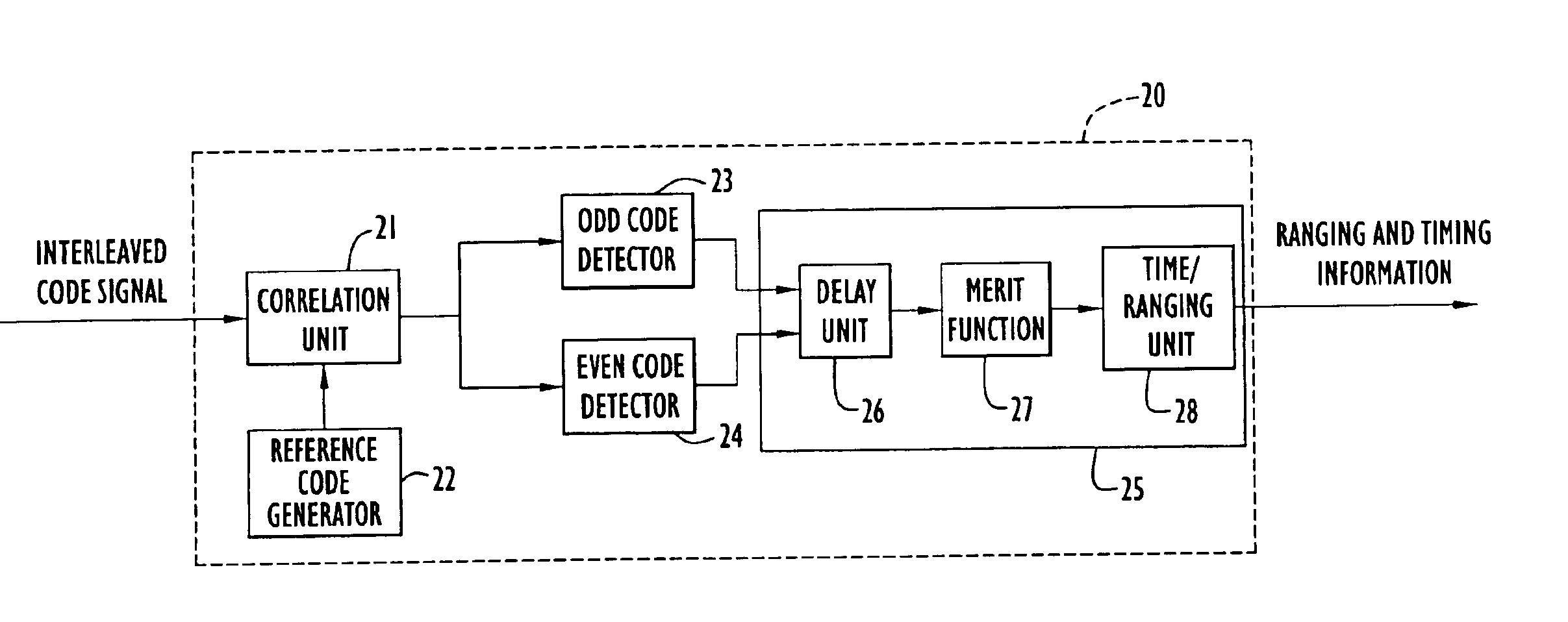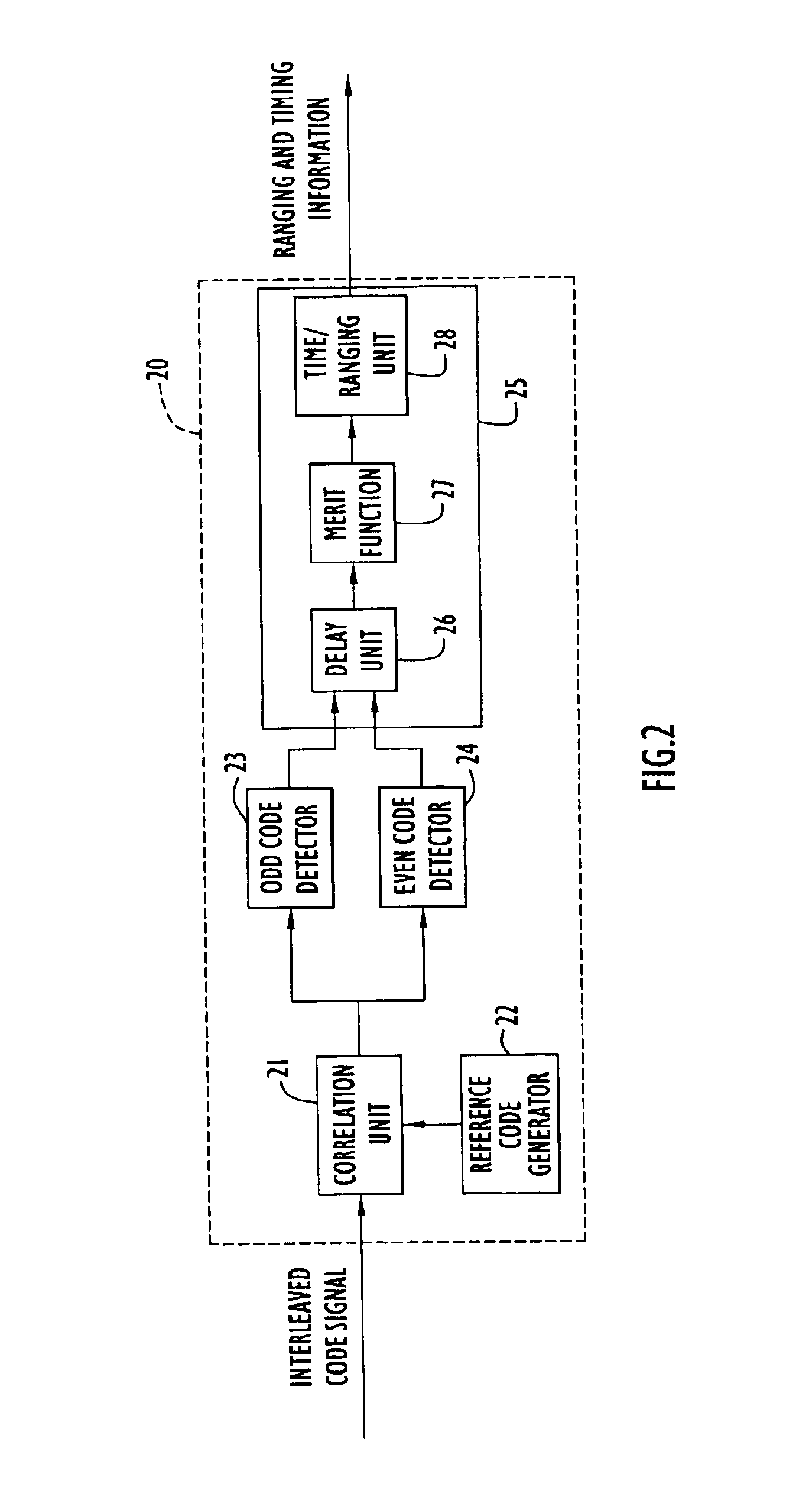Method and apparatus for detecting an interleaved code
a code and code detection technology, applied in the field of digital data communication systems, can solve the problems of inability to provide a clock more accurate than a few seconds in the receiver, and inability to detect coded signals in real time, so as to reduce the number of reference codes, reduce the storage requirements of the receiver, and reduce the number of correlators used
- Summary
- Abstract
- Description
- Claims
- Application Information
AI Technical Summary
Benefits of technology
Problems solved by technology
Method used
Image
Examples
Embodiment Construction
Preferred embodiments according to the present invention are described below with reference to the above drawings, in which like reference numerals designate like components.
The embodiments of the invention described here detect a combination of two short codes. The two codes can be combined to achieve the performance of a much longer code as described in a co-pending patent application entitled “Method and Apparatus for Generating an Interleaved Code Structure,” which is incorporated by reference herein. For example, two codes of about one thousand bits in one millisecond can be combined to make a composite code of two million bits in two seconds. This provides one code alignment every two seconds, and increases the noise tolerance two-thousand-fold, which may be necessary if an enemy is jamming the communication links over which the coded signal is transmitted.
Detection cost is generally proportional to the number of possible time (phase) alignments. It either costs hardware to te...
PUM
 Login to View More
Login to View More Abstract
Description
Claims
Application Information
 Login to View More
Login to View More - R&D
- Intellectual Property
- Life Sciences
- Materials
- Tech Scout
- Unparalleled Data Quality
- Higher Quality Content
- 60% Fewer Hallucinations
Browse by: Latest US Patents, China's latest patents, Technical Efficacy Thesaurus, Application Domain, Technology Topic, Popular Technical Reports.
© 2025 PatSnap. All rights reserved.Legal|Privacy policy|Modern Slavery Act Transparency Statement|Sitemap|About US| Contact US: help@patsnap.com



